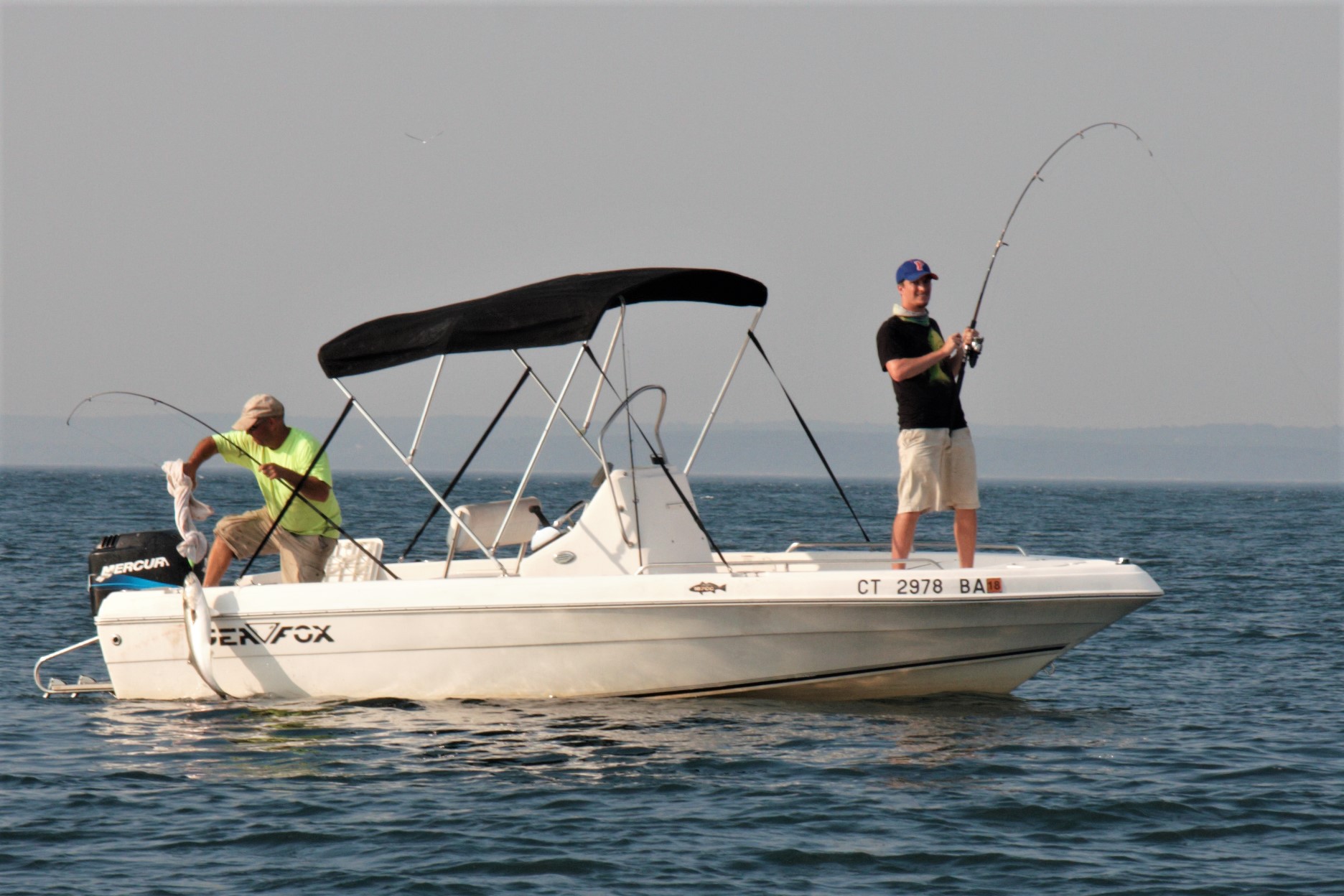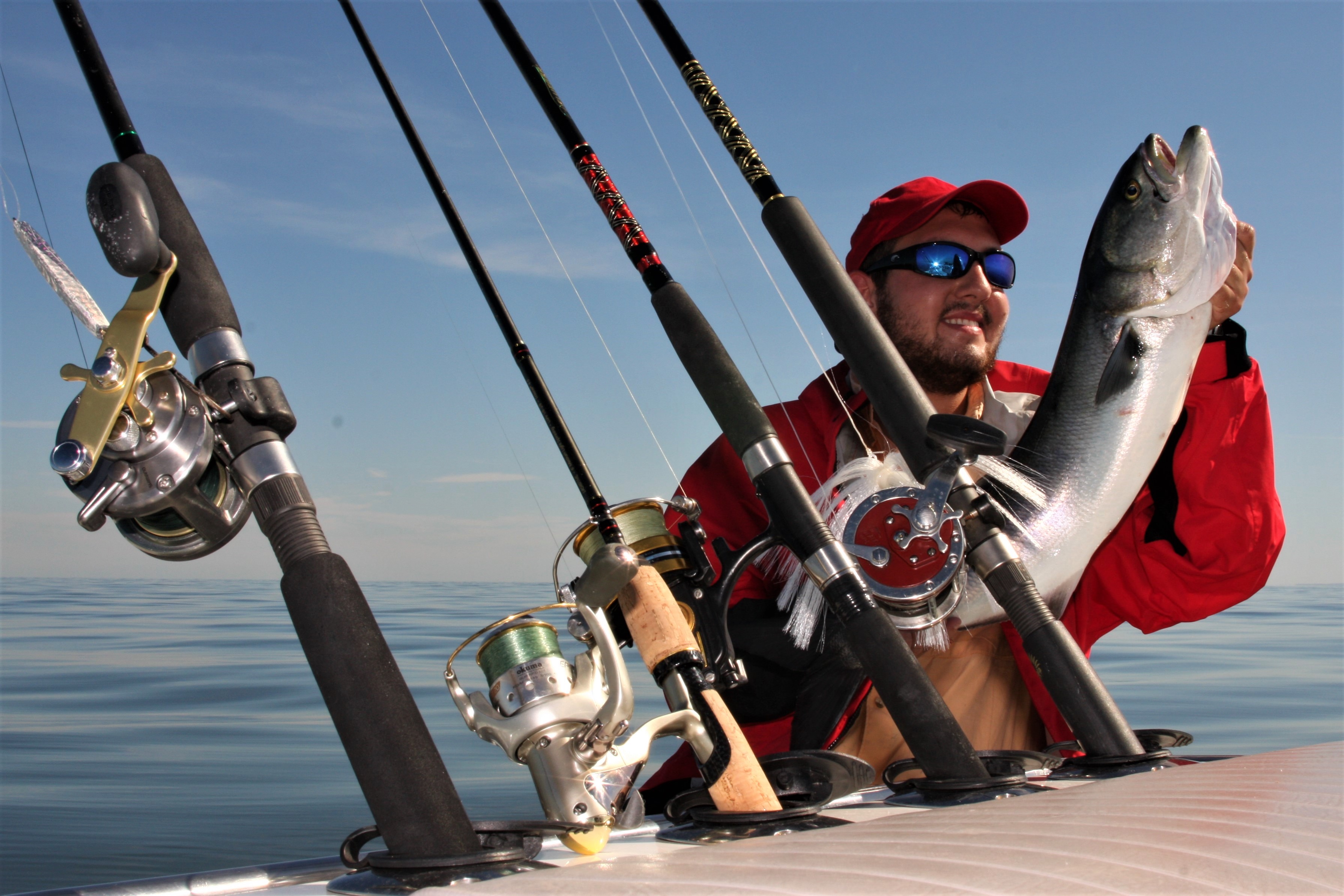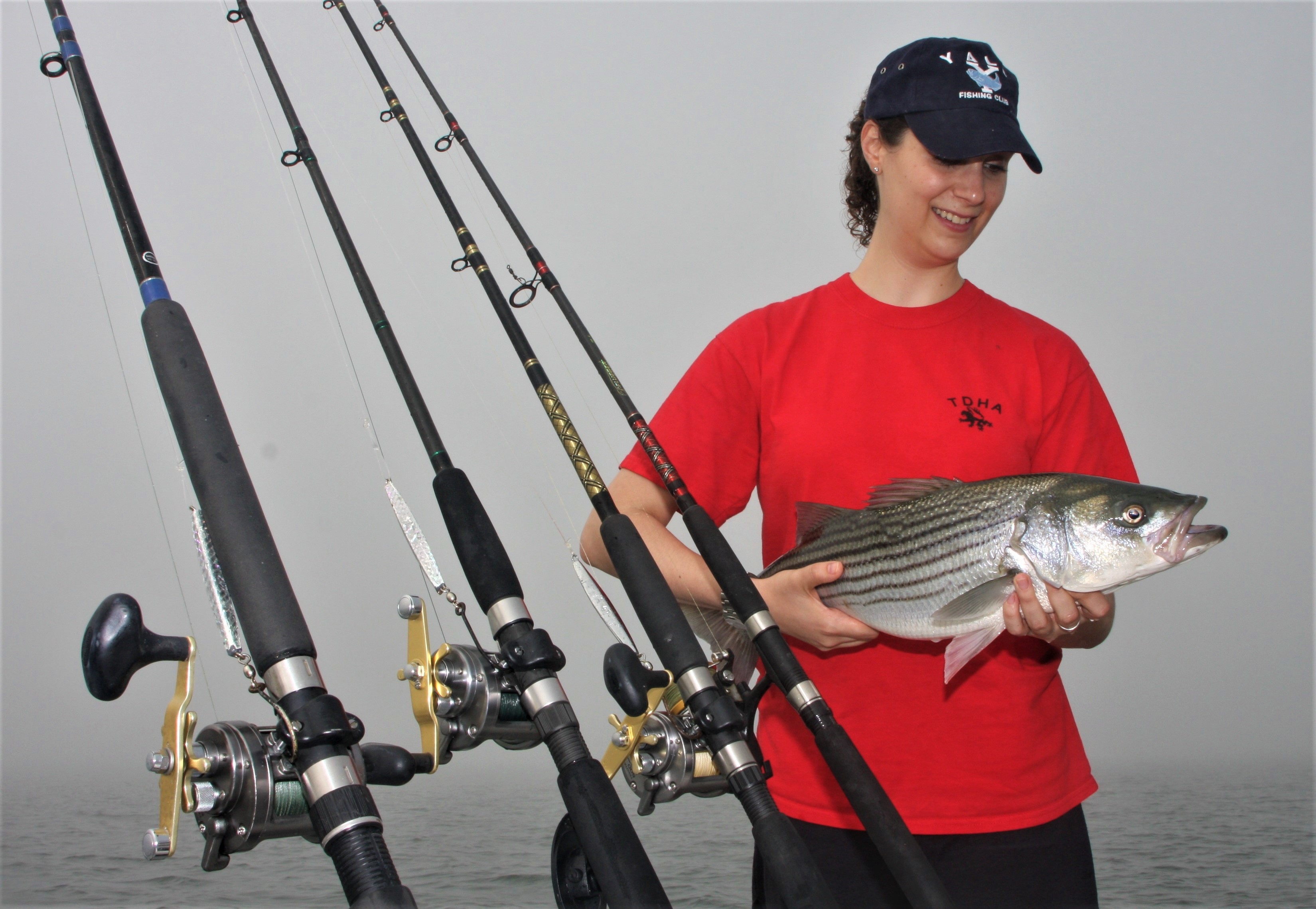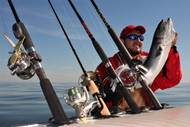The Line Debate: Mono vs. Braid
Posted by Capt. Tom Migdalski on 21st Mar 2022
If you’re new to fishing, you’ve likely noticed two distinct types of lines on the market—monofilament and braid—but which is better? The short answer is, if it’s in good condition, there’s no such thing as bad fishing line. They’re just different. Each material has its unique advantages and disadvantages in various fishing applications.
What is Mono and Why Use It?
Mono lines are created from a single piece of extruded plastic fiber, which is typically a nylon blend. Monofilament is more durable and resists abrasion better in certain situations. But nylon material absorbs water, which weakens its breaking strength over time, and which also means you need to change it out more frequently.
The material’s suppleness has other advantages over braided lines, especially its stretch and elasticity. Mono stretches significantly more than braid. And in rough areas such as coral, shellfish beds, ledge, or rocks, mono lines are more abrasion resistant and therefore less likely to part.
According to one stretch test performed by Lenny Rudow (https://fishtalkmag.com/blog/fishing-line-stretch-test-stretching-truth) using 15-pound mono, an angler may experience two to three times more stretch than he or she would with 15-pound braid. And when using 30-pound mono, anglers may experience up to 10 times more stretch than with 30-pound braid.
“But all things considered,” notes Rudow, “if you set your drag properly and fish like any normal human being, you’re not likely to ever encounter anything like the 25-percent line stretch figure that we see bandied about all over the internet.”
The fact that mono stretches more easily than braid or fluorocarbon (another type of plastic-based line) gives it a forgiveness factor that other lines can’t compete with. This shock-absorption-on-impact quality is useful in some applications like trolling for big game species or casting to explosive predators like tarpon. Some Florida tarpon pros, for example, used to spool up with braided line but found they were breaking off a lot of big fish during somersaulting jumps. So rather than rigging their main line straight from braid to a fluorocarbon leader, these experts ran a topshot of mono between the braid and the leader to cushion the impact.

What is Braid and Why Use It?
Manufacturers create braided lines by weaving together numerous extra-strong synthetic microfibers such as Dacron, Kevlar, Dyneema, and Spectra. These “superlines” or “superbraids” are dense, thin, and taut, with almost no ability to stretch.
A superbraid of about 20-pound test, for example, may have up to 400 individual microfilaments, while a 100-pound-test braided line may have up to 1,000 strands of those microfibers. Because manufacturers start with such tiny fibers, they can create an extremely small diameter line with an abnormally high breaking point for its size. The result is a narrow fishing line with a tensile strength stronger than steel and nearly zero stretch.
Braided lines resist general wear weakening and sun damage and are therefore more durable over time than mono lines from that aspect. They’re ideal for deep bottomfishing because of their thinness for their pound-test rating, and therefore have low current drag, can reach bottom faster, fish more vertically, set the hook immediately, and are much more sensitive. Braids excel in deepwater-jigging applications such as when using diamond, butterfly, or lead-head bucktail jigs.

Although braid has a significantly narrower diameter than mono, its opaque appearance can’t compete with mono’s transparency. Even though mono has a much wider diameter than braid it’s also less visible, which may make bait more appealing to fussy fish in calm, clear, shallow conditions. Mono lines are also available in a range of colors, which some anglers argue allows them to select the best shade for the conditions.
Due to its material and manufacturing costs, braid is significantly more expensive than monofilament. But that cost is offset by its durability, which means you won’t need to replace the line as often.
“There really aren’t any pros to fishing mono when casting lures,” says Capt. Chris Elser (ct-fishing.com) a leading charter captain in western Long Island Sound, “but some anglers still prefer it. The smaller diameter and no-stretch qualities of braided lines are far superior now that manufacturers developed super-smooth braid. There are many brands of braid on the market, but my personal preference is PowerPro Super Slick V2.
“Another advantage of braid is I can cast an Exo Jig or a Big Occhi soft plastic using the same 20-pound braided line setup because it works well for both applications. Distance and accuracy are the key, no matter what Game On! lure you decide to toss, and these new ultra-smooth braided lines almost give you the feel of mono in your hands. But again, you have superior range and accuracy casting a 20-pound line that’s the same diameter as 6-pound mono, the latter of which would not be practical for saltwater species like albies, bones, blues, and stripers.”
For the novice angler, however, mono is usually easier to cast because it tends to get fewer wind snarls off the reel or around the rod guides. And although there are many good knots available to securely tie braid, mono is much easier for a beginner to tie knots.

Mono is also gentler on the hands. In other words, if you’re one who takes wraps of fishing line around your hand to pull out a bottom snag or boat a fish, mono, being much thicker for its pound-test, is less likely to cut into your hands. Never take wraps around your hand with braid, which could lead to severe and deep slices before the line parts or you can swing a big, feisty fish aboard. Use a glove or wrap a rag or towel around your hand first.
“For those who refuse to switch up from mono,” says Elser, “there’s an alternative I often use for live-bait fishing, and that is Yo-Zuri Hybrid line, which is a 50/50 blend of fluorocarbon and nylon, and which brings out the best features of both materials.
“Hybrid offers the abrasion resistance and sensitivity of fluorocarbon, plus the flexibility and stretch of nylon, and is a viable alternative to braid, although the castability is still inferior due to the larger diameter/line-pound-test ratio vs. braid. When using Yo-Zuri Hybrid for casting Game On! lures, I find the best pound test for casting the Exo Jigs to albies and bonito is 12-pound, and for tossing the Big Occhi to bluefish and bass I recommend 15-pound test. Hybrid line is not heavily marketed, but it is one of the best mono options out there.”

